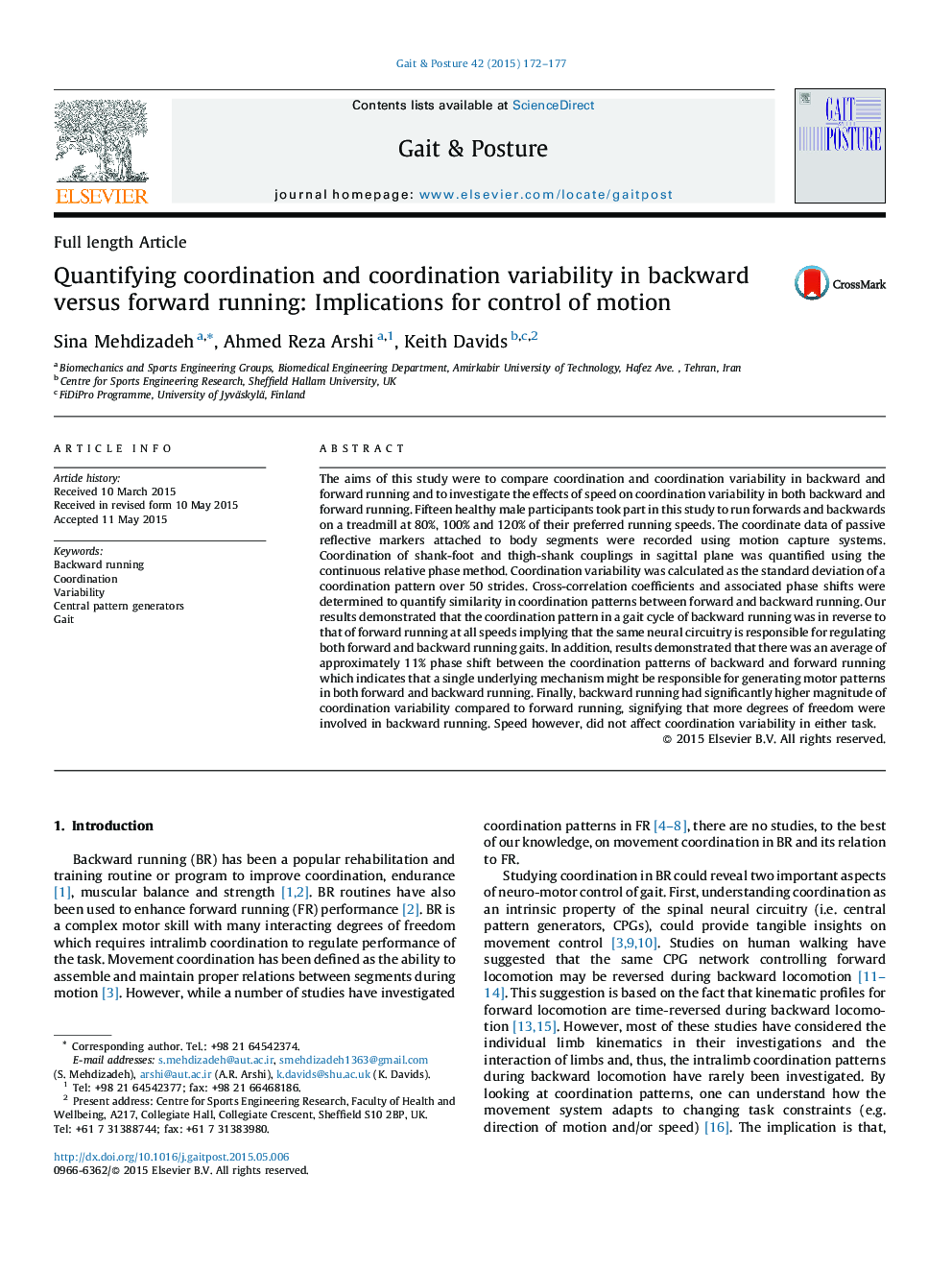| کد مقاله | کد نشریه | سال انتشار | مقاله انگلیسی | نسخه تمام متن |
|---|---|---|---|---|
| 6206023 | 1265637 | 2015 | 6 صفحه PDF | دانلود رایگان |
- This study compared coordination and coordination variability in backward and forward running.
- Coordination of lower limb couplings in sagittal plane was quantified using CRP method.
- Coordination pattern in a gait cycle of backward running was in reverse to that of forward running.
- A single mechanism might be responsible for generating patterns in forward and backward running.
The aims of this study were to compare coordination and coordination variability in backward and forward running and to investigate the effects of speed on coordination variability in both backward and forward running. Fifteen healthy male participants took part in this study to run forwards and backwards on a treadmill at 80%, 100% and 120% of their preferred running speeds. The coordinate data of passive reflective markers attached to body segments were recorded using motion capture systems. Coordination of shank-foot and thigh-shank couplings in sagittal plane was quantified using the continuous relative phase method. Coordination variability was calculated as the standard deviation of a coordination pattern over 50 strides. Cross-correlation coefficients and associated phase shifts were determined to quantify similarity in coordination patterns between forward and backward running. Our results demonstrated that the coordination pattern in a gait cycle of backward running was in reverse to that of forward running at all speeds implying that the same neural circuitry is responsible for regulating both forward and backward running gaits. In addition, results demonstrated that there was an average of approximately 11% phase shift between the coordination patterns of backward and forward running which indicates that a single underlying mechanism might be responsible for generating motor patterns in both forward and backward running. Finally, backward running had significantly higher magnitude of coordination variability compared to forward running, signifying that more degrees of freedom were involved in backward running. Speed however, did not affect coordination variability in either task.
Journal: Gait & Posture - Volume 42, Issue 2, July 2015, Pages 172-177
